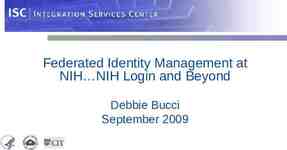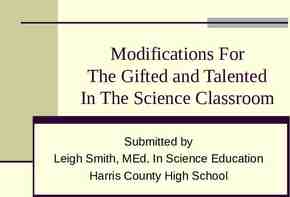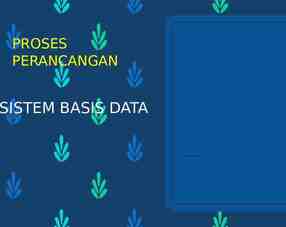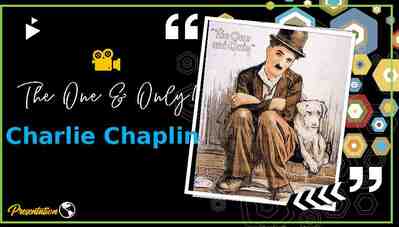Mixed Methods A N N I N A K A LT E N B R U N N E R LEEDS UNIVERSITY
26 Slides124.93 KB

Mixed Methods A N N I N A K A LT E N B R U N N E R LEEDS UNIVERSITY BUSINESS SCHOOL A . K A LT E N B R U N N E R @ L E E D S . A C . U K

Outline General Rationale for Mixing Methods Mixed Method research in Heterodox Economics Applied Example Exercise Wrap up and Difficulties with Mixed Method Research

What is Mixed Method Research? MultiMethods Quantitative Methods: - Analytical Statistics - Surveys - Experiments - Structured Interviews - Econometrics Mixed Methodology Mixed Methods Research Question Qualitative Methods: - Interviews - Focus Groups - Participant Observations - Life Stories . Multi Strategy

Methodological Purists Each method tightly linked to ontological paradigm cannot be mixed Quantitative Methods: Positivists Qualitative Methods: Constructivists Ontology Epistemology Axiology Generalizations Causal Linkages Deductive/Inductive Logic

Methodological Pragmatists Use of method depending on research problem – different methods can answer different aspects of research question Methods as mere instruments Truth is ‘what works’ What do quantitative methods do? Count and Measure observable aspects of social life with an interest in generalisation, replicability and objectivity What do qualitative methods do? Explore and Understand with an interest in rich contextual, subjective information

Purpose of Mixed Method Research Greene et al. 1989 1. Triangulation: Convergence, Corroboration, Correspondence of results from the different methods (reduce bias) Same Phenomenon 2. Complementarity: Elaboration, Enhancement, Illustration, Clarification of the results from one method with the results from the other method Similar/Overlapping Phenomenon

Purpose of Mixed Method Research Greene et al. 1989 3. Development: Use the results from one method to help develop or inform the other method 4. Initiation: Discovery of paradox and contradiction, new perspectives of frameworks, the recasting of questions or results from one method with questions or results from the other method 5. Expansion: Extend the breadth and range of inquiry by using different methods for different inquiry components

Mixed Method Design Equivalent Status Designs Dominant-Less Dominant Designs (Nested) Sequential Sequential Parallel/ Simultaneous Parallel/ Simultaneous

Mixed Method Design Equivalent Status Designs Interactive Development Initiation Complementarity Independent Triangulation Dominant-Less Dominant Designs (Nested)

Expanding the Purpose of Mixed Method Research (Bryman, 2006) Process Sampling Confirm and Discover Context Explanation Unexpected Results Illustration

Mixed Method Research in (Heterodox) Economics Brewer and Hunter (1989) in Tashakori and Teddlie (2008): “Since the fifties, the social sciences have grown tremendously. And with that growth, there is now virtually no major problem-area that is studied exclusively within one method “ (p. 22) Bryman (2006): “ so far as research practice is concerned, combining quantitative and qualitative research has become unexceptional and unremarkable in recent years (p. 254)”

Mixed Method Research in (Heterodox) Economics .not in Economics Search for mixed-method (mixed method; triangulation): American Economic Review: None Quarterly Journal of Economics: 2 (in-text referring to mixing of quantitative methods) Economic Journal: gave up

Mixed Method Research in Heterodox Economics Dominance of quantitative methods Any space for quantitative methods if institutions, history, politics matter? Does Heterodox Economics differ from mainstream Economics also in its ontology?

Mixed Method Research in Heterodox Economics Critical Realism: The Ontological Case for Mixed Method Research Reality is structured (it includes, but is irreducible to, actualities such as events and states of affairs and our experiences of them), open (event regularities are not ubiquitous) and differentiated (closure, sustaining event regularities, do occur under some, but only under some very specific conditions) Three different ontological domains: the empirical (what can be observed) – the actual (events whether they can be observed or not) – and the real (structures and mechanisms that produce events) (Lawson, 1997)

Mixed Method Research in Heterodox Economics Mixed methods to reveal different features of the same structured and layered reality, for example (Downward and Mearman, 2007) Analytical statistics and Econometrics to investigate context and time specific and temporary event regularities (tendencies or demi-regularities) Qualitative methods to uncover the underlying structures and mechanisms that shape empirical surface phenomena ‘The aim is to construct a nexus of mutually supportive claims of reality, without the presumption of being exhaustive, in which the whole stands distinct from its parts’(Downward and Mearman, 2007) Pragmatic approach to mixed method research which is true to ontological basis (Closest to Complementarity) Retroduction

Mixed Method Research in Heterodox Economics Sheila Dow (Babylonian Method): The Epistemological Case for Mixed Method Research Given the open, organic, complex and transmutable nature of reality, knowledge of this reality can always only be partial. Given that full knowledge is impossible to attain, a range of explicitly partial analyses is necessary to deal with that incompleteness. Separate fields, theories and indeed methods are required to analyse the different facets of reality (Dow 1990; Dow 1996).

Financialised Internationalisation and Structural Hierarchies: A mixed-method Study of Exchange Rate Determination in Emerging Markets 52 semi structured interviews with currency traders (36 pilot interviews) April to June 2008 in SãoPaulo and Rio de Janeiro (31 interviews) and November 2009 to November 2010 in London (21 interviews) Purposive Sampling Open questions FX Actors that take directional positions (proprietary traders in banks, hedge funds and real money investors) Multivariate GARCH Models

Financialised Internationalisation and Structural Hierarchies: A mixed-method Study of Exchange Rate Determination in Emerging Markets Post Keynesian Framework of exchange rate determination Driving role of financial sector expectations formed under fundamental uncertainty – necessarily context and time specific Shaped by underlying structural hierarchies- Currency Hierarchy Needed interviews to Investigate the context and time specific nature of expectations formation in emerging market foreign exchange markets Uncover the underlying structures that shape their behaviour

Financialised Internationalisation and Structural Hierarchies: A mixed-method Study of Exchange Rate Determination in Emerging Markets Needed Econometrics to Investigate translation of agents’ expectations (and hence underlying structures) into empirically observable surface phenomena on the macroeconomic level between the exchange rate and its determinants The actual magnitude of these relations and their statistical significance To what extent the quasi-closures/demi-regularities lasted over time

Financialised Internationalisation and Structural Hierarchies: A mixed-method Study of Exchange Rate Determination in Emerging Markets Ontological Justification for Mixed-Method Research – Critical Realism Different methods granted insights into structured and layered reality Careful use of Econometrics (temporary closures) Practical Justification for Mixed-Method Research (Pragmatist) Market Structure Sampling Development What is really going on (black-box nature of Econometrics) Only way to go .

Financialised Internationalisation and Structural Hierarchies: A mixed-method Study of Exchange Rate Determination in Emerging Markets – Results Identified main market actors Confirmed fundamental uncertainty and crucial role of inter-subjective processes of price formation (conventions, flows and stocks) Little conception of neoclassical exchange rate theory Pointed to underlying process of internationalisation and its financialised and subordinated character

Exercise Please write down your research in a few lines and your three main research questions. On a different sheet of paper please note the methods you are proposing to pursue and consider whether there is a case for mixedmethod research and if so which one. If not, please motivate this too. Exchange research questions sheet.

Difficulties with Mixed Method Research Underlying paradigm continues to create method bias Paradigm influences formulation of research question and hence choice of method Equivalent status of methods difficult to achieve Qualitative methods: Excess of Information and Time How to match results Nevertheless: For me the only way to go

References Bryman, Alan. "Integrating Quantitative and Qualitative Research: How Is It Done?". In The Mixed Methods Reader, edited by Vicki L. Plano Clark and John W. Creswell, 251-71. London: Sage Publications, 2006. Downward, Paul, and Andrew Mearman. "Retroduction as MixedMethods Triangulation in Economic Research: Reorienting Economics into Social Science." Cambridge Journal of Economics 31, no. 1 (2007): 77-99. Greene, J.C., V.J. Caracelli, and W.F. Graham. "Toward a Conceptual Framework for Mixed-Method Evaluation Designs." In The Mixed Methods Reader, edited by Vicki L. Plano Clark and John W. Creswell, 119-49. London: Sage Publications, 1989.

References Kaltenbrunner, Annina. "Financialised Internationalisation and Structural Hierarchies: A Mixed-Method Study of Exchange Rate Determination in Emerging Economies." Cambridge Journal of Economics (2017): bex081-bex81. Available at: https:// academic.oup.com/cje/advance-article/doi/10.1093/cje/bex081/47804 46?guestAccessKey 6cbd815c-d320-44ad-9d39-238e70835fcd Lawson, Tony. "Economics and Reality." London: Routledge, 1997. Tashakkori, Abbas, and Charles Teddlie. "Introduction to Mixed Method and Mixed Model Studies in the Social and Behavioral Sciences." In The Mixed Methods Reader, edited by Vicki L. Plano Clark and John W. Creswell, 5-27. London: Sage Publications, 2008.

Additional Readings Bryman, Alan. Social Research Methods. Oxford: Oxford University Press, 2001. Dow, Sheila. The Methodology of Macroeconomic Thought. Cheltenham, UK: Edward Elgar, 1996. Kaltenbrunner, Annina. "Currency Internationalisation and Exchange Rate Dynamics in Emerging Markets: A Post Keynesian Analysis of Brazil ". PHD Dissertation, University of London (2011), Chapter 6. Available at: http://eprints.soas.ac.uk/14353/1/Kaltenbrunner 3296.pdf






